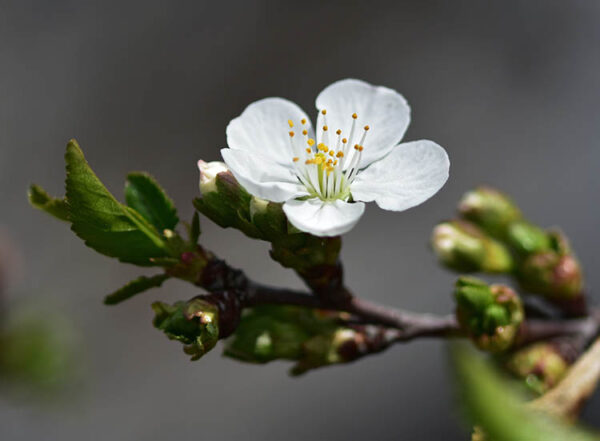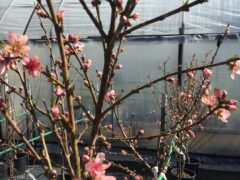This small native tree has spreading branches and a broad, open crown and sometimes grows in more of a large shrub form and provides a thicket. Exfoliating bark reveals silvery-gray inner bark. Large, white or pink flowers grow in clusters that cover the tree are followed by yellow-green, apple-like berries. Cedar-apple rust, apple scab, and other leaf diseases can be severe on this native tree. Applications of organic copper fungicide when flower buds first emerge until spring weather becomes consistently warm and dry will help prevent damage. Brilliant crimson foliage in fall.
An excellent food source for a variety of birds, including bobwhites and pheasants, and squirrels, rabbits, and other mammals. Crabapples are valuable early nectar source for native bees and honey bees.
Crabapple cultivars have been selected to resist cedar apple rust and produce smaller, persistent fruit for a more low-maintenance ornamental tree. Cultivars also provide needed early spring nectar to pollinators and persistent fruit remains available to winter songbirds.
crabapple
Malus hybrids
A genus of about 35 species of deciduous trees and shrubs from Europe, Asia and North America. Adaptable to a wide variety of soil and light, good resistance to the main diseases of crabapples including apple scab, fire blight, rusts, leaf spot and powdery mildew. Insect pests are of lesser concern. Blooms in spring. Hardy to zone 4. ‘Indian Summer’ (pink/orange berries) 15-20’ tall and wide ‘Prairiefire’ (dark pink) 15-20’ tall and wide ‘Sargent’s (white) 6–10 ft tall and 6–12 ft wide ‘Sargent’s Tina’ (white) 5’ tall and 6’ wide ‘Sugar Tyme’ (white) 14-18’ tall and 11’–15’ wide 'Harvest Gold' (white with gold berries) 18-20' tall and 15' wide 'Louisa' (weeping, pink-flowered) matures to 12-15' tall and as wide All of the above cultivars are recommended by Kansas Roots, a service directory that aims to help gardeners make research-based plant decisions. K-State Research and Extension specialists have tested many varieties for their hardiness and growth potential.

